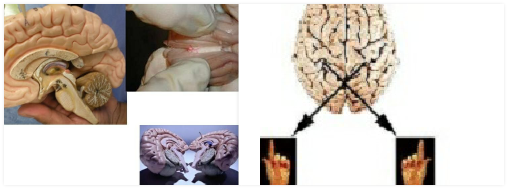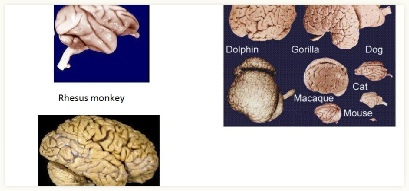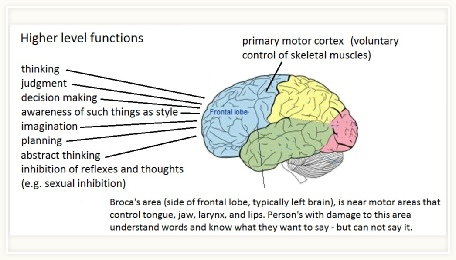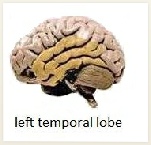


5GL Software © Australia
5GL Software admin@5gldoctor.com

Frontal Lobes
The largest area of the human brain. Responsible for what are known as higher level functions such as thinking, planning, judgment, imagination.
An important area in the frontal lobes is Broca’s area which is responsible for our ability to speak. This area is not the word understanding area, that lays further back, but it is responsible for coordinating mouth and tongue and jaw muscles so that we can speak. Other primates, and human beings are considered as primates, such as gorilllas, can learn sign language but they do not have an equivalent of Broca’s area that makes it possible for them to speak like we do.

Occipital Lobes
Contain our visual cortex. The term “cortex” refers to a specific functional area
-
Right at the back is where the image from the eye is projected. The image on its
own does not mean much to the brain -
This understanding is achieved by what are known as association area. There are two
main visual association areas -
Parietal Lobe
Has different functions in the two brains. Typically the left brain contains Wernicke’’s
area which is a general interpretation area. Not just language as we know it -
These are distinct anatomical divisions. In the lobes there are different cortex areas meaning functional areas, that is areas which look after specific functions. A cortex may span more than one lobe or may be a small portion of a lobe.

Temporal Lobes
These lay on the side of the brain. Important in memory, and understanding taste and smell.


The visual association areas also depend on the memory areas mainly in the temporal lobe in order to understand that which is being seen.